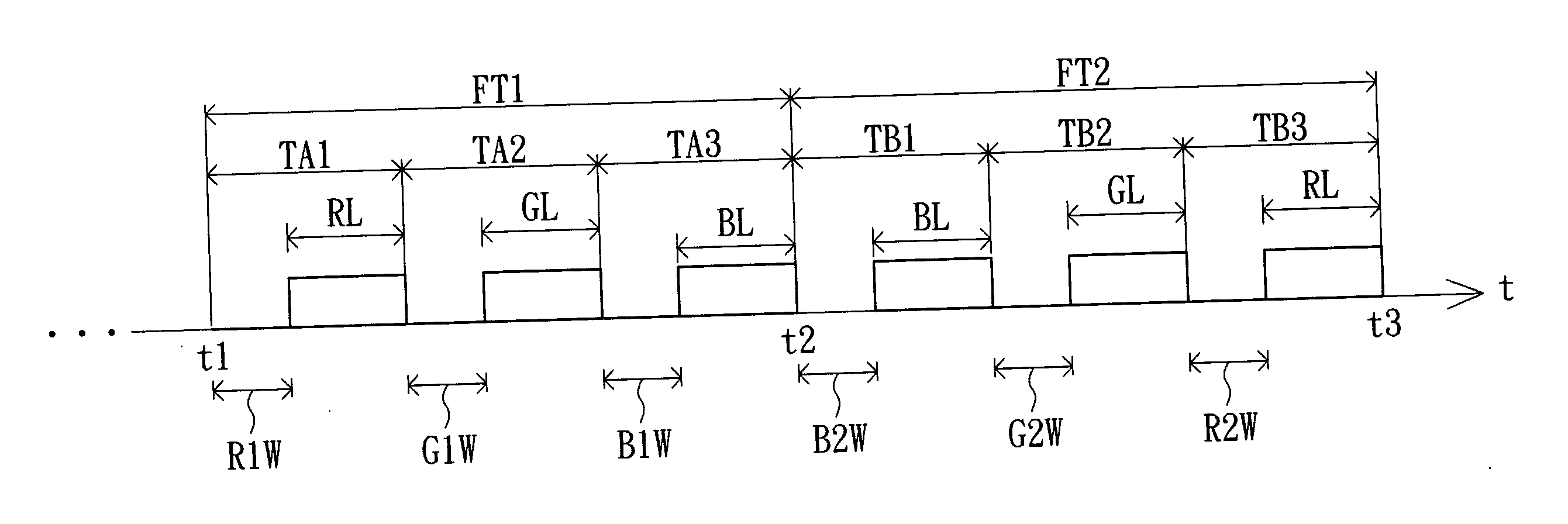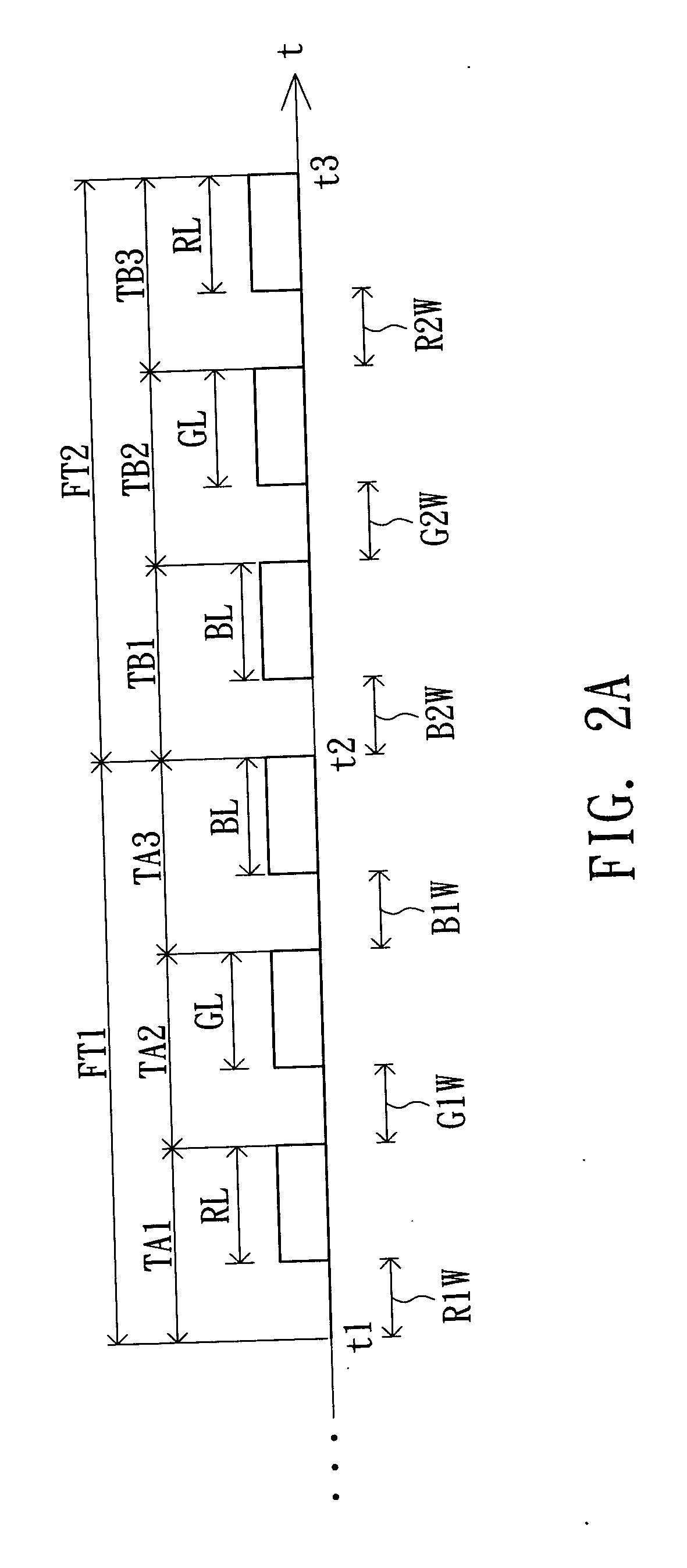Color-sequential display method
- Summary
- Abstract
- Description
- Claims
- Application Information
AI Technical Summary
Benefits of technology
Problems solved by technology
Method used
Image
Examples
first embodiment
[0022] Referring to FIG. 1, a diagram showing the display process of conventional color-sequential display is shown. Take a first image and a second image for example. The first image and the second image respectively include a red data R, a green data G and a blue data B, wherein the first image is displayed at a first frame time FT1, and the second image is displayed at a second frame time FT2. The display has a red, a green and a blue backlight sources. Conventional color-sequential display method has the first frame time FT1 from time t1 to time t2 divided to time domains TA1, TA2 and TA3, and sequentially and respectively displays a red data R1, a green data G1 and a blue data B1 of the first image during the three time domain. So a viewer can recognize the color image of the first frame time FT1 through the persistence of vision.
[0023] To put it more precisely, the red data R1 of the first image is written to all pixels of the display first during a write period R1W of the ti...
second embodiment
[0029] Referring to FIG. 3A, a diagram showing the display process of a color-sequential display according to a second embodiment of the invention is shown. Compared with the conventional color-sequential display method, the color-sequential display method of the second embodiment respectively divides the first frame time FT1 and the second frame time FT2 to two time domains. The first frame time FT1, which is divided to time domains TA1 and TA2, sequentially and respectively displays the green data G1 and the red data R1 of the first image during the two time domains. The second frame time FT2, which is divided to time domains TB1 and TB2, sequentially and respectively displays the green data G2 and the blue data B2 of the second image during the two time domain.
[0030] That is, the green data G1 of the first image is written to all pixels of the display first during the write period G1W of the time domain TA1, and then the green backlight source is turned on for the green data G1 ...
third embodiment
[0035] Referring to FIG. 3B, a diagram showing the display process of a color-sequential display according to a third embodiment of the invention is shown. FIG. 3B is a variation of the second embodiment, and the same elements with the second embodiment are not repeated here. As shown in FIG. 3B, during a write period R2W of the time domain TB1, only the red data R2 of the second image is written to all pixels of the display with the red data R1 of the first image being left out. Then, during the turn-on period RL of the time domain TB1, the red backlight source is turned on for the red data R2 to be displayed on the display. In short, the second embodiment omits the red data R2, while third embodiment omits the red data R1 instead from the original sequential display of data B1, G1, R1, R2, G2, B2.
[0036] On the other hand, in second embodiment or third embodiment, when the electronic device is at low power mode, none of the display method of FIG. 3A, FIG. 3B or FIG. 4 is used to d...
PUM
 Login to View More
Login to View More Abstract
Description
Claims
Application Information
 Login to View More
Login to View More - R&D
- Intellectual Property
- Life Sciences
- Materials
- Tech Scout
- Unparalleled Data Quality
- Higher Quality Content
- 60% Fewer Hallucinations
Browse by: Latest US Patents, China's latest patents, Technical Efficacy Thesaurus, Application Domain, Technology Topic, Popular Technical Reports.
© 2025 PatSnap. All rights reserved.Legal|Privacy policy|Modern Slavery Act Transparency Statement|Sitemap|About US| Contact US: help@patsnap.com



